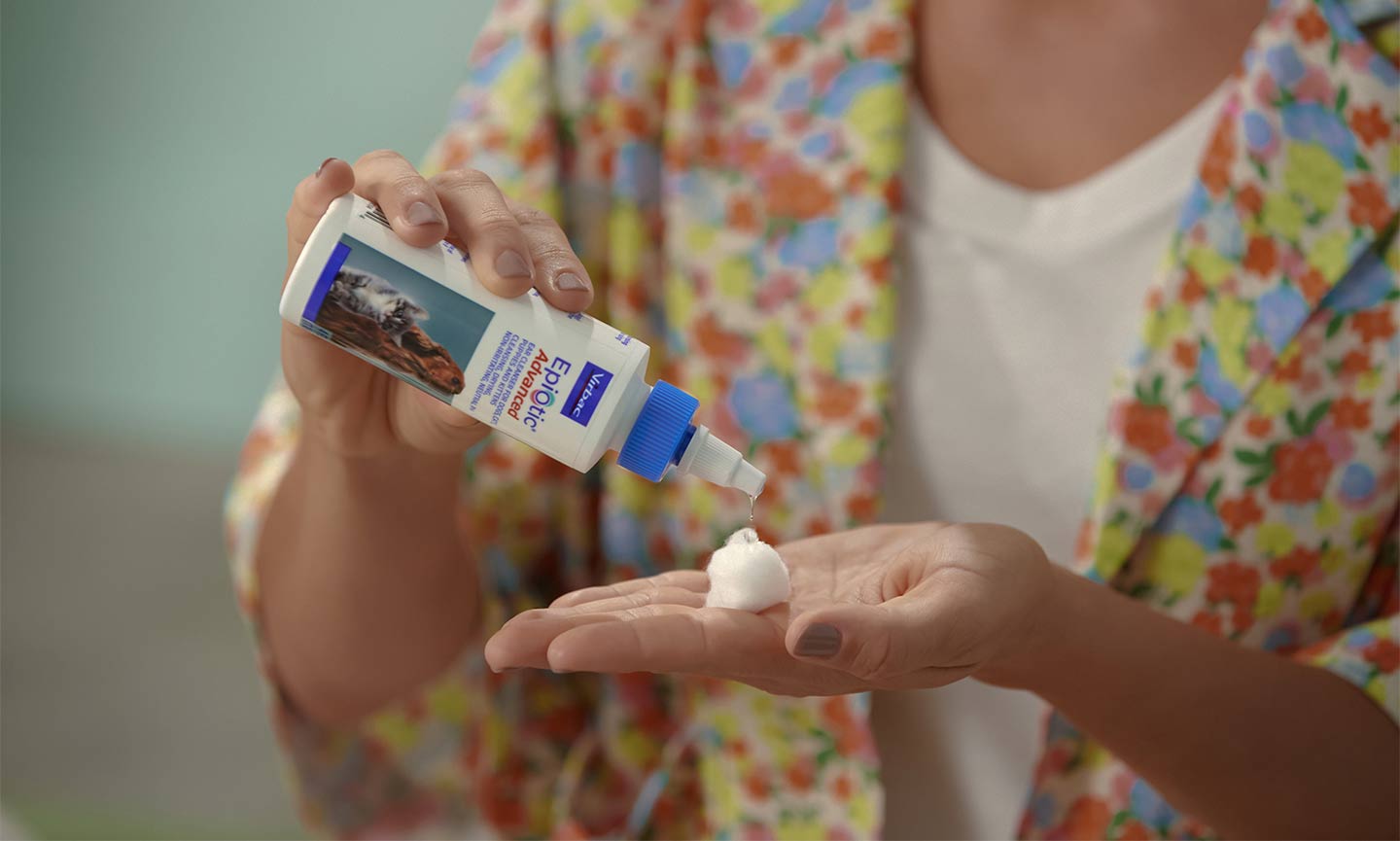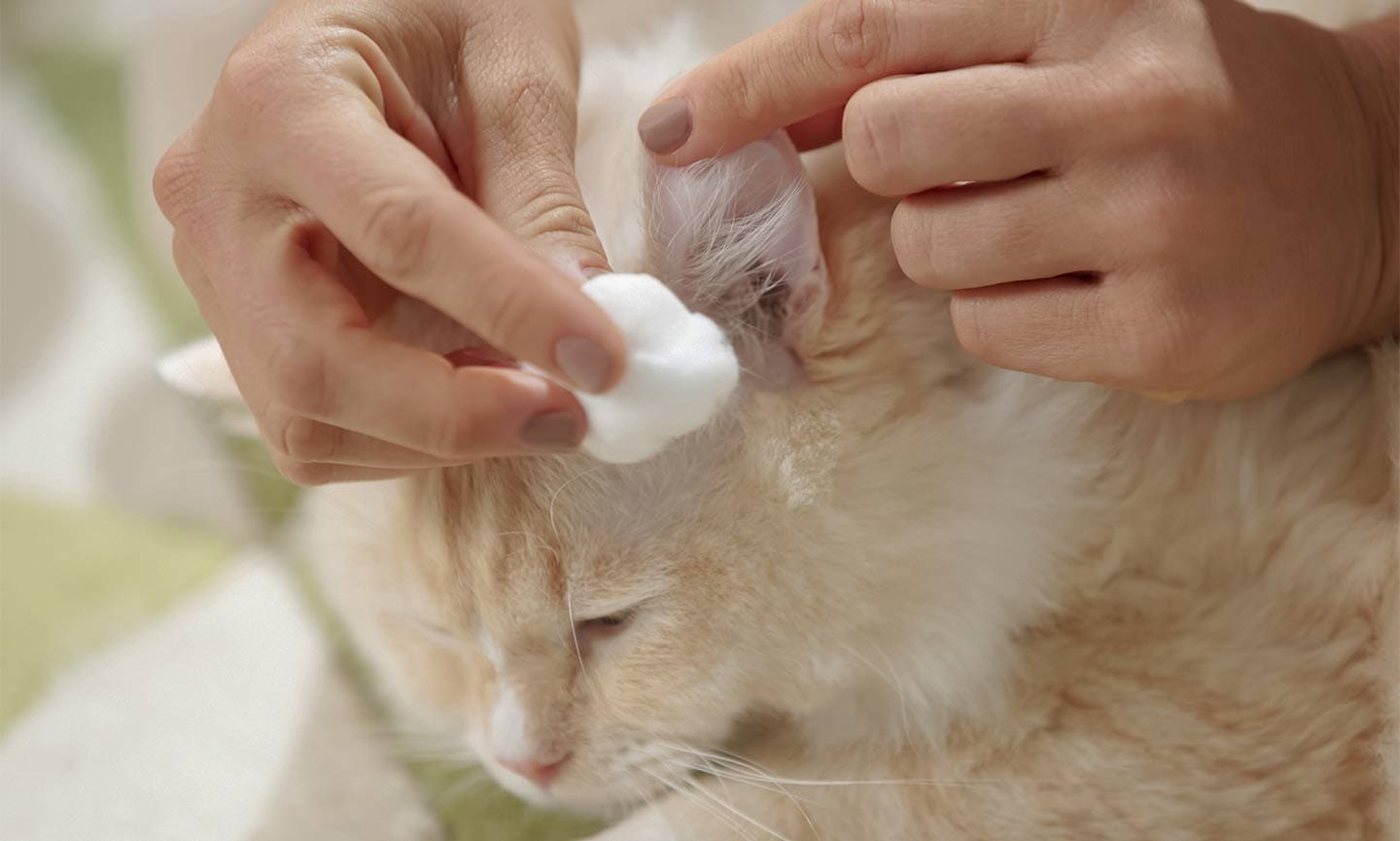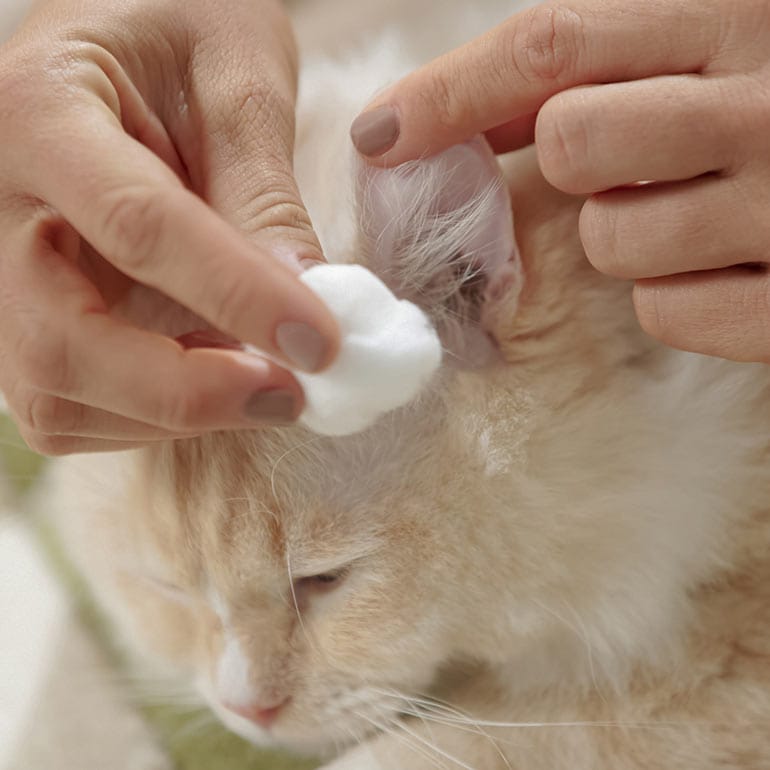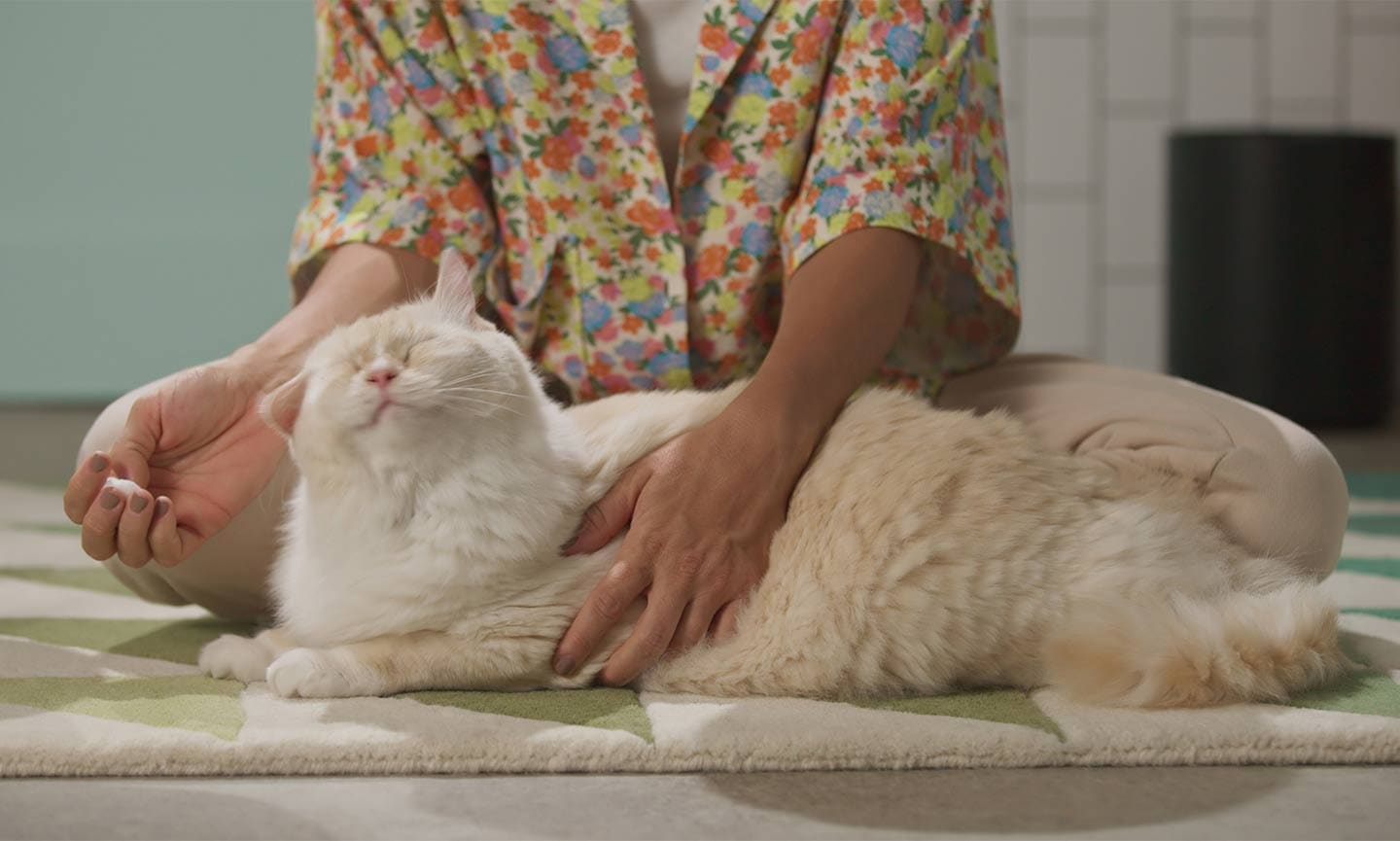From giving snuggles to picking the right food, being a cat parent comes with all kinds of pet care responsibilities. One topic that can be a little confusing is how to clean cat ears—and whether you even need to do so on a regular basis. After all, cats are expert self-groomers!
The reality is that cleaning cat ears is usually not necessary. However, there are some instances when your vet may recommend ear cleaning to address specific issues. Keep scrolling for the full rundown on when and how to clean cat ears.
In This Guide:
When To Clean Your Cat’s Ears
Our independent feline friends are quite good at cleaning themselves without much human intervention. (If you’ve ever witnessed your cat’s fastidious grooming process, you know this already!) That means cleaning your cat’s ears is generally not necessary as part of a grooming routine. Remember: A little ear wax is totally normal!
However, there are some instances when cleaning your cat’s ears may be in order. Cats should only have their ears cleaned, either by you or a professional groomer, in the following cases:
- If a noticeable amount of dirt or debris has made its way into the interior of their ear flaps
- If they have far more wax buildup than what’s usual for them
- If they have ear mites or an ear infection.
If you notice any of these signs, check with your veterinarian first—unnecessary ear cleanings can actually irritate your cat’s ears and create health issues, so it’s important to get an expert’s go-ahead before taking any action.
Signs of Infection or Parasites
The symptoms of an ear infection or ear mites include:
- Head shaking
- Keeping their ears down
- Increased/excessive scratching
- Redness
- Inflammation
- Tiny brown or black particles
- Brown or yellow discharge
- Foul smell
- Dry debris
- Pus
- Excessive ear wax
In cases of infection or ear mites, your vet may recommend a medicated or prescription ear cleaner that’s designed to treat your cat’s specific health issue. You can also request that they help clean your cat’s ears at the appointment.
Excess wax buildup is often a sign of infection or ear mites, but there are rare cases in which cats simply produce too much ear wax. If your cat has a wax buildup problem, your veterinarian may recommend monthly cat ear cleanings. You can do this on your own or bring your cat to a professional groomer or veterinarian. If your cat is anxious in the hands of others (like many are!), the professional may recommend sedation so your cat feels more relaxed through the process.
Supplies for Cleaning Cat Ears
Before starting the cleaning process on your cat’s ears, you’ll need to gather the essentials:
- Ear cleaner (over-the-counter or prescription, depending on your vet’s recommendation)
- Cotton balls
- Clean cloth
- Towel
Important note: Do not use cotton swabs like Q-Tips® to clean their ears. In fact, you should never stick anything into your cat’s ear canal. Cotton swabs in particular are dangerous because they can reach too far into the ear and damage or puncture the eardrum. Remember that your cat is unlikely to sit still for this procedure, and the wrong motion could have serious effects.
Instead, use cotton balls placed just at the opening of the ear. (We’ll walk you through the process below.)
How To Clean Cat Ears: Step-by-Step Instructions
1 Soak a Cotton Ball With Ear Cleaning Solution
2 Place the Cotton Ball in Their Outer Ear
Use the soaked cotton ball to gently massage the soft part of the ear opening. This helps loosen up debris and wax. Continue massaging for about 30 seconds.
How you hold your cat during this process depends on the temperament and personality of your kitty. Some cats like to be wrapped up in a towel, which has the added bonus of tucking their claws safely away. But for other cats, restraining them this way could backfire by making them even more stressed. You can also try holding them in your lap, cradling them like a baby, and any other ways that you typically hold your cat. The way that feels most comfortable them is the best way to do it.
3 Wipe Up the Solution
Using a clean cotton ball, wipe up the solution and any debris. You can also use a clean tissue or thin cloth to get into the creases and folds more easily. Again, do not stick anything into a cat’s ear canal.
You may find it easier to use a pre-treated ear wipe to clean your cat’s ear flap interior. Two good options include Vetnique Labs® Oticbliss™ Ear Wipes Advanced Cleaning, Soothing, & Medicated Dog & Cat Ear Wipes and Petpost™ Ear Wipes with Coconut Oil & Aloe Vera For Cats.
4 Let Your Cat Shake
FAQs About Cleaning Cat Ears
Q:What is the black stuff in my cat’s ears?
A:Black debris in your kitty’s ears can have several causes. It could simply be dirt that’s become lodged in the delicate ear folds, or it could be signs of ear mites or infection. Consult your veterinarian to determine the cause.
Q:What are the benefits of cleaning my cat’s ears?
A:Ear cleanings should only be performed to treat infection or ear mite infestation, excessive wax buildup, or notable amounts of dirt and debris. Doing so can promote healing and bring your cat relief. However, unnecessary ear cleaning can actually harm your cat, so always check with your veterinarian first.
As you can see, knowing how to clean cat ears is pretty straightforward. The trickier part is understanding if and when you should do so, since our feline friends are quite good at keeping themselves groomed to the max. Always consult your veterinarian to make sure you’ve got the green light on tending to your cat’s ears!
Expert input provided by Angie Krause, DVM, a veterinarian for Boulder Holistic Vet in Louisville, Colorado.
This content was medically reviewed by a veterinarian.
Like this story? Check out more of our favorite reads:
Share:




















